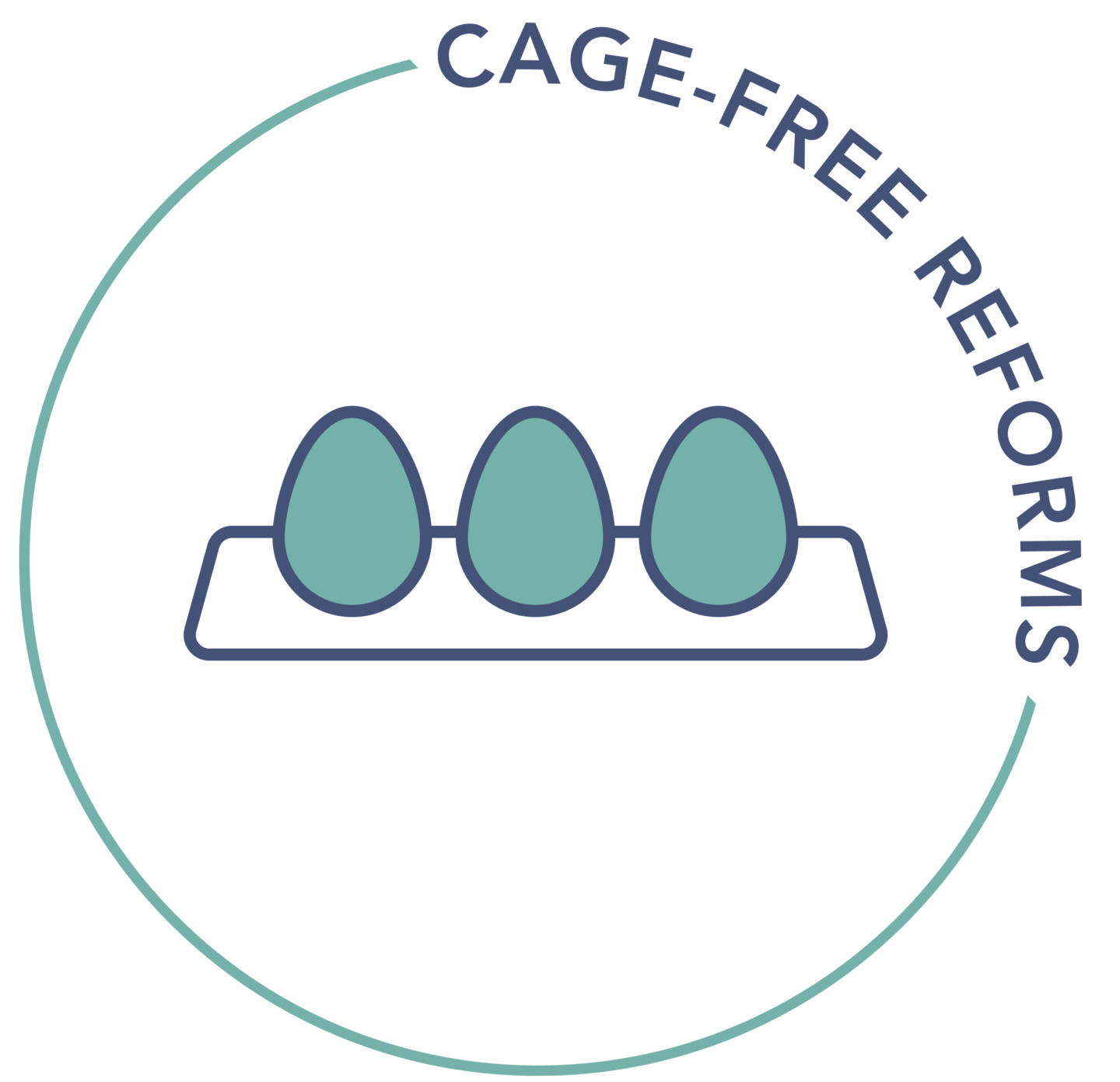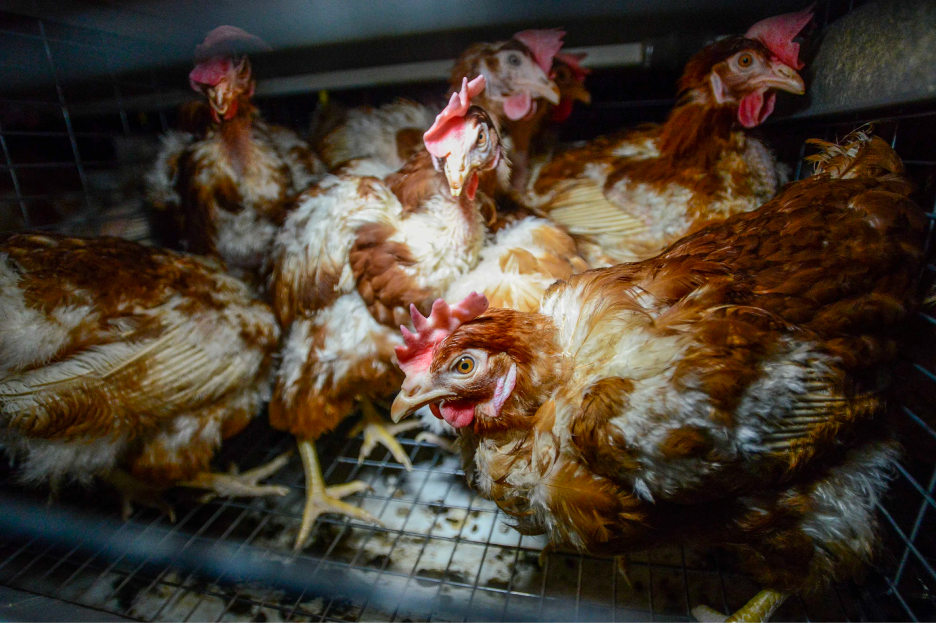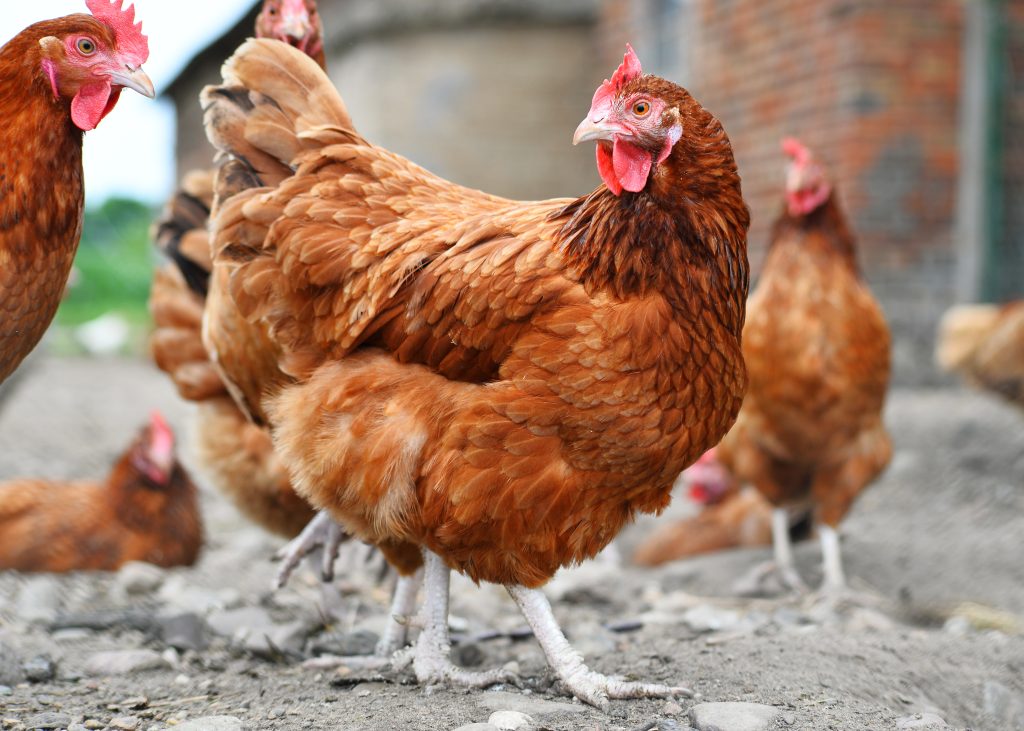Billions of egg-laying hens, confined in battery cages, are exposed to conditions that cause severe suffering.

Cage-Free Reforms
Corporate campaigns have freed hundreds of millions of layer hens from cages.
The vast majority of the world’s roughly seven billion layer hens are permanently confined to battery cages.
Caged hens are some of the most mistreated animals in the world. Battery cages confine four or more hens in a cage the size of a microwave oven. This deprives them of their ability to spread their wings, forage, build nests, take dust baths, and perch. This deprivation can lead to maladaptive behaviors, like pecking flock-mates to the point of serious injury and sometimes death. Caged hens also experience health issues due to selective breeding and high egg production.

Farm animal advocates are working with companies to shift their egg procurement to higher welfare farming systems. Advocates work with companies to support supply chain transitions and to track and report on companies’ progress toward meeting their commitments.
Over 3,000 companies globally have now committed to go 100% cage-free in their supply chains. They include almost all of the largest American and European retailers, fast food chains, and foodservice companies — and an increasing number of major Asia-Pacific food companies too. We estimate that these pledges, if fully implemented, will spare about 500 million animals every year from life in a barren cage.
This work is in large part thanks to the advocacy of groups like The Humane League, Mercy for Animals, and Compassion in World Farming, which have educated companies on the cruelty associated with battery cages and assisted them in transitioning to more humane alternatives.
Thanks to this work, 165 million more hens are already cage-free in Europe and the US today than were a decade ago. The world’s biggest companies are actively reporting on their progress in reducing the number of caged hens in their supply chains.
In cage-free systems, hens are able to move around and exhibit natural behaviors. Recent analysis demonstrates that this leads to higher welfare through less time in pain. The Welfare Footprint Project estimates that the transition from conventional cages to cage-free aviaries reduces the time hens spend in disabling pain by 64% and in hurtful pain by 57%.

As more companies commit to using only cage-free eggs, we’ve started to put more effort toward ensuring that they follow through on their pledges, by funding organizations to track and report on their progress. Additionally, we plan to support efforts to bring cage-free work to countries that still have large numbers of caged hens.
The success of corporate campaigns might also pave the way for legislative action. As more and more companies transition to cage-free, consumers and producers may stop defending the use of battery cages and support legislation that requires producers to use cage-free aviaries.
Cage-Free Reforms, at a glance
-
70+ Grants
Made -
2096 corporate cage-free pledges secured by our grantees